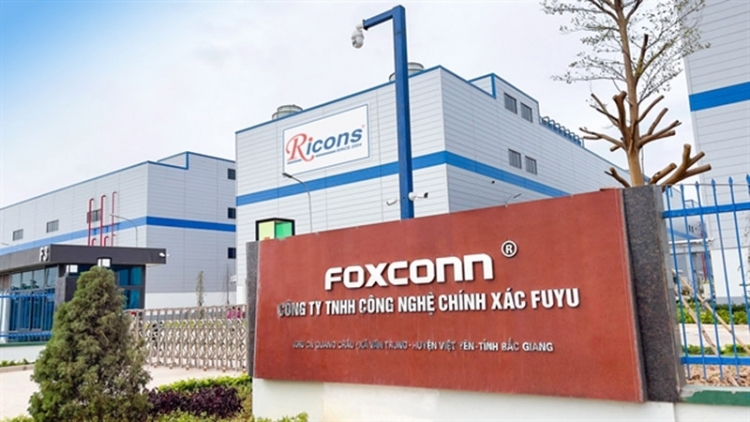Bac Giang is located in the Northeast region of Viet Nam, about 50 kilometers to the east of Hanoi, 110 km from Huu Nghi Quan border gate (the largest border gate between Vietnam and China); 50 km from Noi Bai international airport; 130 km from Hai Phong seaport and Cai Lan – Quang Ninh deep sea port.

In this province, the transportation system is quite convenient, including roads, waterways and railways. In which, the roadways have: Hanoi – Bac Giang – Lang Son Expressway, Hanoi Ring Road 4 connecting Hanoi – Bac Giang Expressway with Hanoi – Thai Nguyen Expressway, National Road 17 connecting Bac Giang with Que Vo Industrial Zone – Bac Ninh, National Road 18 to Quang Ninh, Hai Phong, National Road 37 connecting Bac Giang to Thai Nguyen, etc.
Regarding riverways, Bac Giang has Cau River, Thuong River and Luc Nam River whereas the railways has Hanoi – Lang Son route (trade route to China via Huu Nghi border gate) and Kep – Bai Chay route (Quang Ninh).
With a natural land of 3,895 square kilometers, and a population of over 1.8 million people, the province has 09 administrative units at district level and 01 city. Bac Giang city is the administrative center of the province .
Bac Giang province is located in the tropical monsoon climate region of Northeast Vietnam; therefore, it has four distinct seasons a year: dry and cold in the winter, hot and humid in the summer, mild in the spring and autumn. The average annual temperature is about 23 – 24 ° C, the lowest temperature: 4 ° C, the highest temperature is 39 ° C. The average humidity is 83%. The average annual rainfall is about 1,400-1500 mm / year. The average annual amount of sunshine ranges from 1,500 to 1,700 hours, which is favorable for cultivation and development of tropical and sub-tropical crops.
The province has 382,200 hectares of natural land, including 123,000 hectares of agricultural land, 110,000 hectares of forestry land, 66,500 hectares of urban land, specialized land and residential land. The remaining 82,700 hectares are of other types of land.
Electricity supply: Currently, the national power grid is connected to each commune in the province, including 220, 110, 35 and 22KV voltage levels. Bac Giang has completed and put into operation Son Dong Thermal Power Plant with a capacity of 220MW. The transmission line and 500KV Son La – Hiep Hoa substation, one of the national key projects, have been officially commissioned.
System of training facilities and human resources:
The province has a young, dynamic and capable human resource. Bac Giang has a system of training facilities including: 01 university, 4 colleges, 7 intermediate schools and over 80 vocational training institutions. The population of the province is 1.8 million, of which its working age population is over 1.1 million people with trained workers account for over 60% of the total population. The income of workers in industrial zones is currently about 6.5 million VND/person/month.
The province has 17 hospitals, of which the provincial level has 2 general hospitals and 6 specialized hospitals (including: Obstetrics – Pediatrics; Endocrinology; Traditional Medicine; Psychiatry; Tuberculosis and Lung Diseases; Nursing and Restoration rehabilitation) and 9 district general hospitals. 100% of communes and wards in the province have health stations.
Along with the potentials for industrial and agricultural development, Bac Giang has numerous favorable conditions for tourism development. The province has a system of unique historical, cultural and artistic architectural monuments with more than 2,230 monuments, of which 731 are ranked. The province has many famous cultural and architectural works, in which, a number of typical monuments and works such as Special National Monument – Vinh Nghiem Pagoda (Yen Dung District), Special National Monument Bo Da Pagoda (Viet Yen District), Xuong Giang Victory relic site, Tay Yen Tu spiritual – ecological tourist area, etc. Traditional festivals are still preserved and increasingly promoted and extended. In particular, Bac Giang province has 5 cultural heritages recognized by UNESCO including woodblocks of Vinh Nghiem pagoda, Quan Ho folk songs, Ca Tru, The belief of the worship of Three Goddesses of Vietnameses, Then practice of the Tay, Nung, and Thai in Vietnam.

Industry is a potential economic sector in the province. Currently, the province has planned and implemented 06 industrial zones (IZs) with a total area of 1,460 hectares. The IZs of the province are planned in places convenient for transportation: 05 IZs along National Highway 1A and 01 IZ adjacent to Yen Phong IZ – Bac Ninh. Currently, 05 IZs have been put into operation with a total planned area of 1,063 hectares, including Dinh Tram IZ, Song Khe – Noi Hoang IZ, Van Trung IZ, Quang Chau IZ and Hoa Phu IZ. The remaining Viet Han IZ which the Prime Minister has approved the investment policy.

In the near future, Bac Giang will add 3 more IZs, namely Yen Lu IZ, Yen Son – Bac Lung IZ, Tan Hung IZ with a total area of 782.3 hectares and expand 3 IZs including Quang Chau IZ, Hoa Phu IZ, Viet Han IZ with an additional area of 323 hectares.
The province has 40 industrial clusters (ICs) with a total planned area of 1,385 hectares and widely deployed in districts and the city. The ICs are planned and implemented at convenient roads and axes of the province.
Bac Giang aims to focus on attracting industries and products with high scientific and technological quality. Bac Giang is making efforts to improve the investment and business environment; prioritize investment in infrastructure of industrial zones and clusters; pay attention to training, improve the quality of human resources, meet the employers’ requirements of enterprises and pay special attention to reforming administrative procedures. Investors only need to go to an address that is the Management Board of Industrial Parks of Bac Giang province or the Department of Planning and Investment of Bac Giang province to be granted an investment certificate, tax code and seal.

